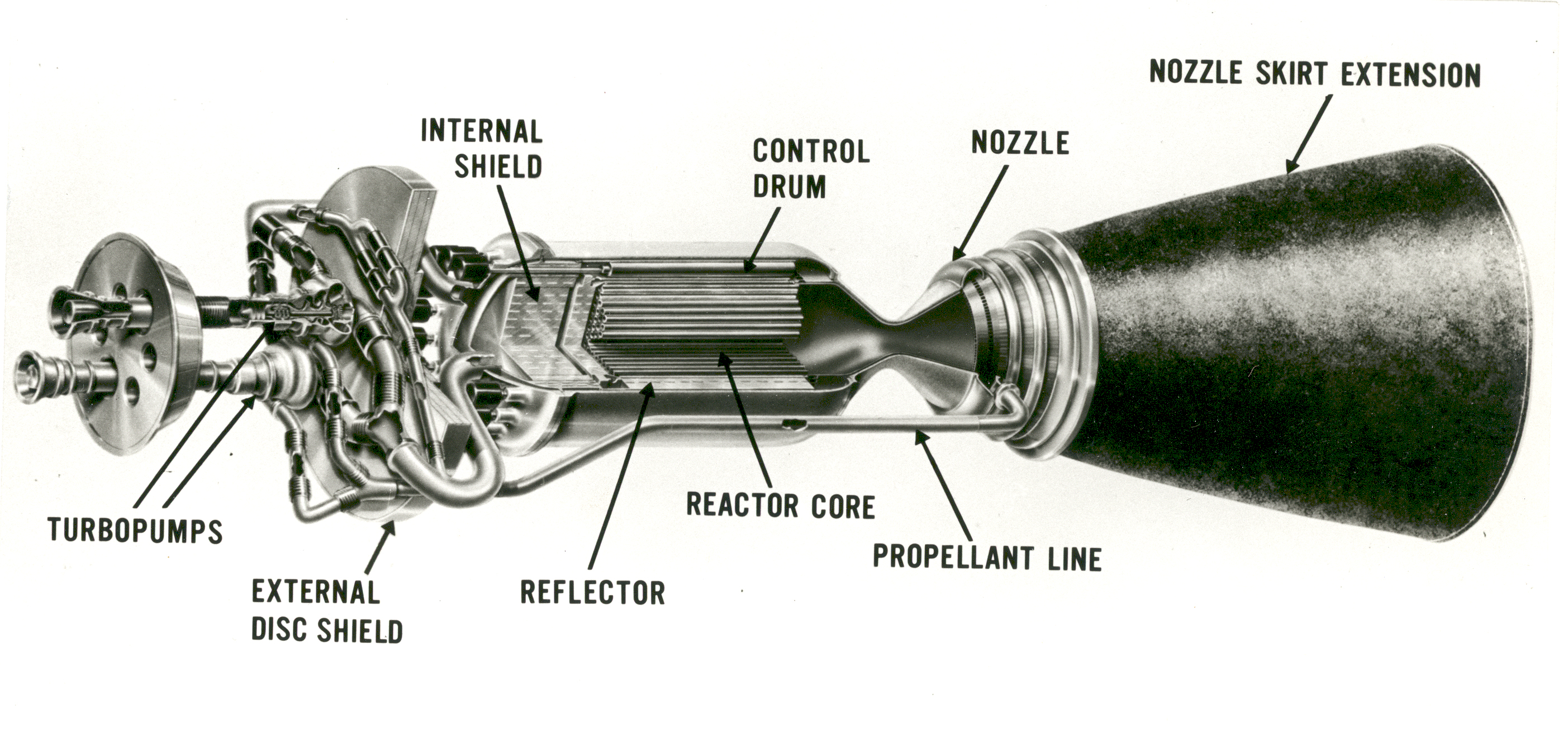The NERVA, Nuclear Engine for Rocket Vehicle Application, system was developed by the National Aeronautics and Space Administration during the Space Race. The NERVA engine was planned as a third stage for the Saturn rocket, used in the Apollo lunar missions, which would allow it to carry larger payloads into space. The NERVA rocket engine fit the requirements for a manned Mars mission. At the time it was developed, NERVA was more powerful than any chemical engine.
Nuclear thermal rockets work by heating liquid hydrogen to a very high temperature using a nuclear reactor, which then expands and accelerates through the nozzle to create thrust. The reactor is powered by nuclear fission (the splitting of an atom). Nuclear rockets have a specific impulse two to three times that of chemical rockets.
NASA initiated nuclear rocket research in 1955. The program was given major emphasis in the 1960’s in the Rover/NERVA program. This program involved two government agencies: NASA (National Aeronautics and Space Administration) and the AEC (Atomic Energy Commission). In an effort to not separate the development of the engine and the reactor, a joint program was created. It was managed by the SNPO (Space Nuclear Propulsion Offics), which was led by both representatives from NASA and the AEC.
Principal research for the project was conducted by the Los Alamos National Laboratory. In 1961, engine development for NERVA began. The contractors were Aerojet and Westinghouse. The priorities for the engine were safety and reliability (considered more important than weight and performance), an emphasis on engine components (specifically the propellant feed system, nozzle, and engine control system), and facilities for engine assembly and tests. Most research was directed towards graphite reactor technology with a hydrogen coolant, however two alternatives, both with a higher risk and benefits, were also given attention: metal reactors and liquid and gas core reactors.
Mission planning for this technology centered around lunar exploration and a manned mission to Mars. The latest model was the NRX/XE. Other models included, Phoebus, KIWI, and Peewee.
Testing of the NERVA engine began in 1966. After many successful tests, the SNPO certified that the NRX/XE nuclear thermal rocket engine fit the requirements for a manned Mars mission. Such a mission was planned for 1978. However, even though the NERVA engine was a success, Congress judged that a manned mission to Mars would continue the expensive Space Race for decades. So, along with most of the space program, NERVA funding was cut by the Nixon administration before a manned Mars mission could take place.
NERVA could be used for multiple missions. It can be stored in space for up to three years. It has 45,000 megawatts of thermal power, 250,000 pounds of thrust, 850 seconds of specific impulse, and a 5,500 degree Fahrenheit exhaust temperature. The technology, which could still be used today, costs about 1.5 billion dollars.

No comments:
Post a Comment